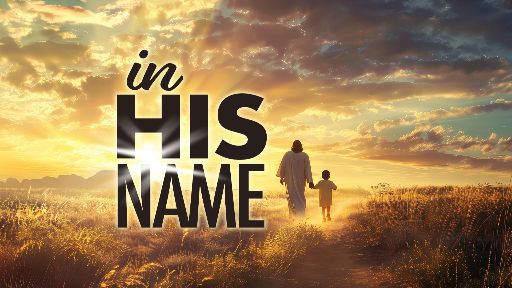-
You Will Be Called Peter Series
Contributed by David Owens on May 22, 2018 (message contributor)
Summary: This sermon begins a series on the life of Peter. This sermon gives a brief background and looks at Peter's first encounter with Jesus when Jesus gives him a new name.
Introduction:
A. We begin today’s sermon and sermon series with a poem written by Myra Brooks Welch in 1921.
1. I was first introduced to this poem by Avon Malone, a professor at Harding University, and preacher at the Highway Church of Christ, where I worked part-time as a youth minister while I was a student at Harding.
2. Avon Malone was a gifted orator who was a master of alliteration.
3. This poem was one he had memorized and often quoted in his sermons.
4. After graduation from Harding, Avon invited me to his office and gave me a framed copy of this poem, “The Touch of the Master’s Hand.” The poem goes like this…
‘Twas battered and scarred, And the auctioneer thought it hardly worth his while
To waste his time on the old violin, but he held it up with a smile.
“What am I bidden, good folks”, he cried, “Who will start the bidding for me?”
“A dollar, a dollar, Do I hear two?” “Two dollars, who’ll make it three?”
“Three dollars, once; three dollars, twice; going for three -” But, No,
From the room, far back, a gray-haired man came forward and picked up the bow;
Then wiping the dust from the old violin, And tightening up the strings,
He played a melody, pure and sweet, As sweet as a caroling angel sings.
The music ceased and the auctioneer, With a voice that was quiet and low,
Said, “What am I bidden for this old violin?” And he held it up with the bow.
“A thousand dollars, and who’ll make it two? “Two thousand? And who’ll make it three?"
“Three thousand, once; three thousand, twice; And going, and gone!” said he.
The people cheered, but some of them cried, “We do not quite understand,
What changed its’ worth? Swift came the reply. “The Touch of the Masters Hand.”
And many a man with life out of tune, And battered and scarred with sin,
Is auctioned cheap to a thoughtless crowd, Much like the old violin.
A “mess of pottage,” a glass of wine; A game - and he travels on.
He’s going, once; he’s going, twice; He’s going, and “almost gone.”
But the Master comes, And the foolish crowd never can quite understand,
The worth of a soul, and the change that is wrought,
By the Touch of the Master’s Hand.
B. All of us are like that battered, old violin.
1. Without the “Touch of the Master’s Hand” we would have little value or ability.
2. But in the master’s hand, we can be used to make beautiful music.
C. Nowhere is this illustrated more clearly than in the life of a man called Peter.
1. With today’s sermon, we begin a sermon series on the life of the apostle Peter.
2. No character in the New Testament comes before us in living color, with all of his virtues and faults, as that of Peter.
3. In many respects, Peter was the strongest and the weakest of the twelve.
4. Throughout the centuries, so many followers of Christ have been able to identify with Peter’s faith and hope, as well as his doubts and failures.
5. And so, for this reason, the life and writings of a man called Peter are a great resource for encouragement and development for all who want to be disciples of Jesus.
D. So, just who is this man called Peter?
1. Where did he come from and how did he become a disciple of Jesus?
2. And then, how did he become a leading apostle of Jesus and His church?
3. I hope to answer these and many other questions about Peter as we journey through this sermon series.
4. But for today, I want us to explore Peter’s background and his first encounter with Jesus that is recorded in Scripture.
I. Peter’s Background
A. The Bible doesn’t offer us a lot of biographical data on Peter, but there are a number of things we can piece together to give us a general description.
B. First of all, Peter grew up in Bethsaida.
1. Bethsaida was a town at the north end of the Sea of Galilee.
2. Its’ name in Hebrew/Aramaic means “house of hunting” or “house of fishing.”
3. The small town was founded in the 1st century B.C. and abandoned in 65 A.D.
4. Bethsaida sat on the major trade route from Egypt to Damascus and beyond.
C. Peter had most likely received a synagogue education.
1. There in the synagogue he would have learned the OT stories as well as learned to read, write, and do some math.
2. He likely knew some conversational Greek, but Aramaic was his native language.
D. Peter was a fisherman by trade.
1. Andrew, his brother, and James and John the sons of Zebedee, were his business partners.

 Sermon Central
Sermon Central



